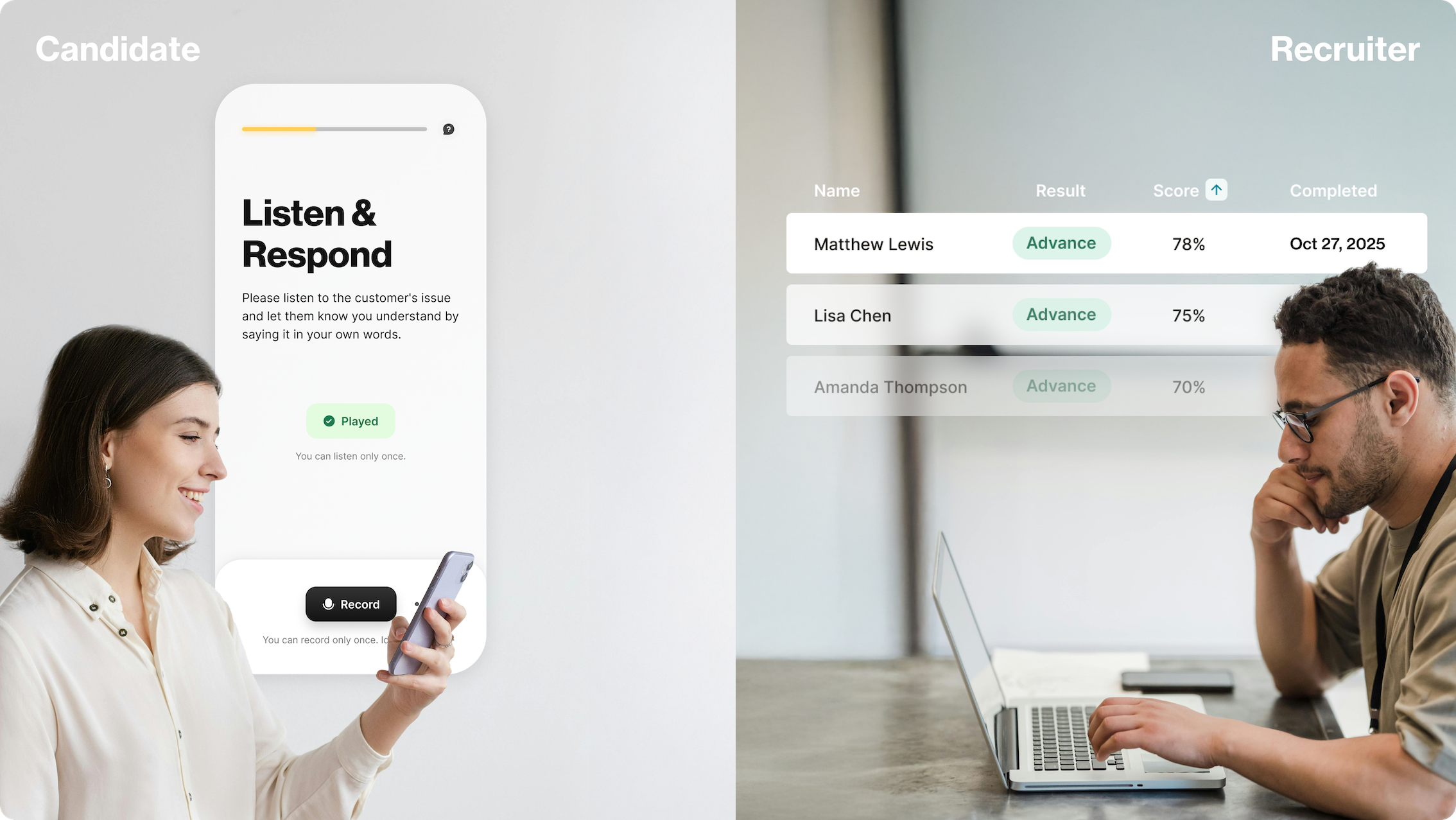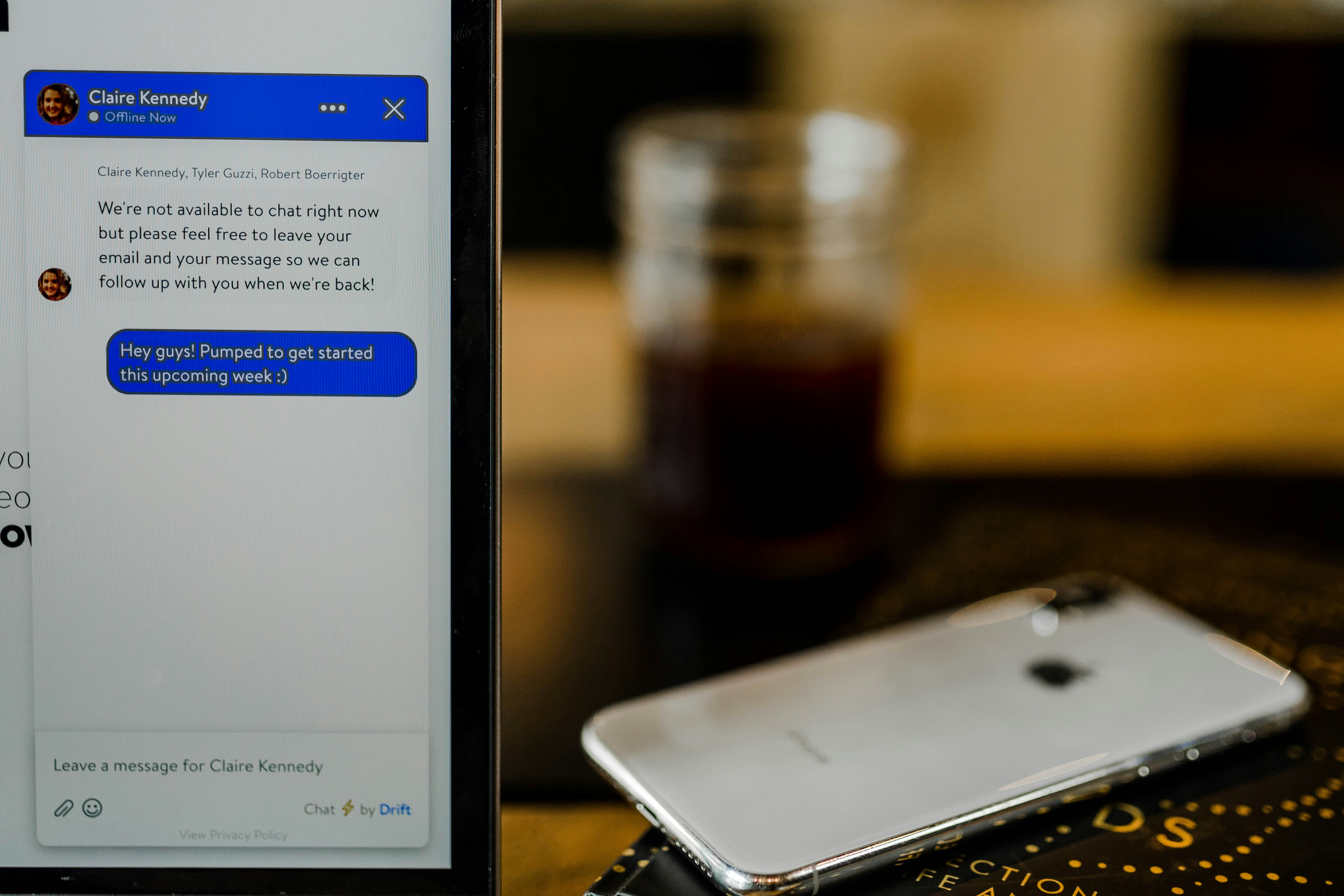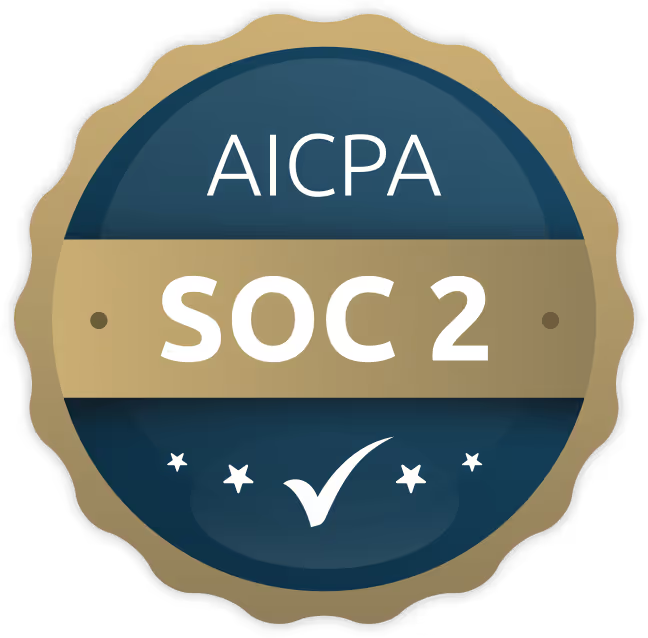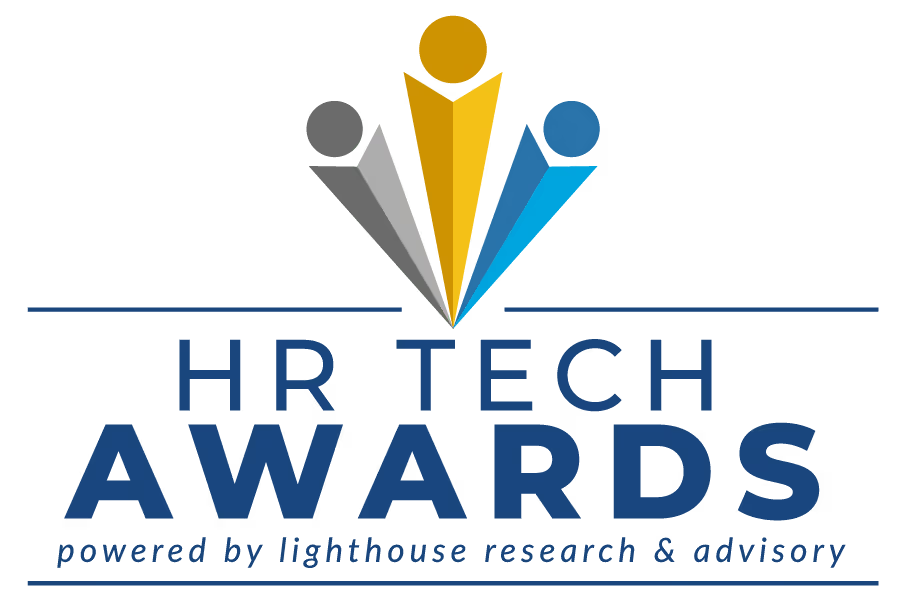
Keeping up with talent acquisition trends helps hiring managers hit their goals faster. It eliminates guesswork to build solid, data-driven recruitment strategies—while highlighting opportunities to outperform competitors.
That’s why we built a list of the most revealing talent acquisition statistics, covering recruiters’ challenges, skill-based hiring, candidate experience, and more. Bookmark it now to guide your hiring tactics throughout 2024 and beyond. Let's dive in, we have a lot to cover!
Talent Acquisition Challenges: The Facts
One thing is clear: recruiting is not without its challenges. The good news is that most high-volume hiring teams share similar issues, and that those issues are very much surmountable. Technology alone solves many of the challenges listed below—at least for teams that choose the right hiring solutions. Whichever candidate assessment solution you invest in, ensure it helps you coordinate and review candidates efficiently.
Here are the facts on recruiters’ current needs and challenges:
- The average cost of a single bad hire in HiringBranch’s sample company (>100,000 employees) was $14,900 USD [HiringBranch]
- 65% of companies have high-volume hiring needs [Aptitude Research]
- Yet, over a third (36.9%) of Canadian businesses anticipated hiring difficulties when asked in 2022 [Government of Canada]
- The three most time-consuming tasks for talent acquisition teams are:
- Coordinating and reviewing candidate pools with hiring managers
- Coordinating interview schedules
- Internal screening of candidate pools [Phenom/Talent Board]
- Recruiters say their biggest talent acquisition challenges for the next five years will be:
- Competition from other companies
- Attracting and retaining Gen Z
- Difficulty finding candidates with the right hard skills
- Difficulty finding candidates with the right soft skills
- Inability to offer competitive salaries [LinkedIn]
- More specifically, the top three challenges associated with high-volume hiring are:
- Not enough candidates
- Reducing time to hire
- Managing high volumes manually [HR Research Institute]
- 93% of respondents say their organizations use talent acquisition technology, with applicant tracking systems being most common [HR Research Institute]
Skills-Based Hiring: The Facts
We’ve long known that skills-based hiring is the most effective and efficient way for global enterprises to build strong, reliable workforces. Going by the latest data, it’s clear more and more in the industry are agreeing. Seeing as skill-based hiring is proven to reduce bad hire rates, cut interview workloads, and boost sales, it’s no wonder employers are eager to get on board.
Here’s what studies say on skills-based hiring:
- In the last five years, interest in skills hiring has grown 300% in the United States’ HR sector [HiringBranch / Google Trends]
- Skills-based hiring reduced bad hire rates from 4.5% to 0.5% for HiringBranch’s sample company [>100,000 employees]—a 400% decrease [HiringBranch]
- Skills-based hiring returned a 10% increase in sales [HiringBranch]
- Interviews can be reduced by as much as 80% by hiring for skills [HiringBranch]
- 73% of recruiting pros say hiring based on skills is a priority [LinkedIn]
- Focusing on skills can increase talent pools tenfold [LinkedIn]
- The number of jobs listed on LinkedIn that omit degree requirements jumped 36% from 2019 to 2022 [LinkedIn]
- Top-performing customer service skills measured with AI [HiringBranch]:
- Acknowledgement
- Positive language
- Delivering difficult messages
- Paraphrasing
- Speaking fluently
- Top-performing sales skills measured with AI [HiringBranch]:
- Building rapport
- Active listening
- Handling objections
- Positioning an offer
- Speaking fluently
Further reading: In many scenarios, skills-based hiring assessments can replace interviews completely, saving employers time and money. Learn more in our article on the rise of the no-interview model.
Candidate Experience: The Facts
The pandemic sparked a remote work boom that still, in 2024, shows no sign of slowing. And, now that job markets aren’t so bound by location, candidates have more choice than ever about who they work for and which job offers they consider.
Employers who want the best talent can’t afford to provide poor candidate experiences. They must ensure their application, assessment, and onboarding processes are smooth and user-friendly from start to finish.
Those who fall short risk not only narrowing their talent pools, but also damaging their employer brands. Both will make staffing even harder in the future.
Let’s look at the recruitment statistics around candidate experience:
- 70% of candidates have considered dropping out of their most recent hiring process, and nearly 40% said it was because the hiring process was too complicated [Sterling]
- There was a 146% increase in remote job applications between 2022 and 2023 [LinkedIn]
- 76% of human capital leaders say talent experience has become more important to their organizations during the past 12 months [Randstad]
- 67% of North American employers said they request feedback from hired candidates—up 68% from 2022 [ERE Media]
- 21% of North American employers never survey candidates about their experience [ERE Media]
- The top three reasons North American candidates withdraw from applications are:
- My time was disrespected during the process
- The salary didn’t meet expectations
- The recruiting process took too long [ERE Media]
- 35% of North American candidates will share negative application experiences publicly online—60% will share with friends and family [ERE Media]
Further reading: The best way to learn what candidates want? Ask them directly. Learn more in our summary of Lighthouse Research’s candidate experience survey.
Social Media Recruitment: The Facts
Social media is a key part of modern recruitment for all involved, and the data shows it’s going nowhere fast. While it’s clearly useful for promoting positions and building employer brands, social media doesn’t let hiring teams fully screen candidates or manage applications.
That’s why it’s most effective when it’s paired with other recruitment tech, such as applicant tracking systems and candidate assessment tools.
Here’s the data on current social recruitment trends:
- A 2023 survey of European recruitment, talent acquisition, and employer branding specialists found that:
- 98% use social media for recruitment and employer branding
- 65% have dedicated social media channels for recruitment and employer branding
- 90% encourage employees to get involved in social recruitment activities
- 61% believe including employee photos in social posts leads to more engagement
- 48% rely on their marketing teams to create recruiting content for social media
- 64% use social media primarily to increase the number of applications [Content Stadium]
- The most used social media channels among TA teams are LinkedIn and Facebook, but Instagram is gaining popularity [Content Stadium]
- 71% of American hiring decision-makers screened candidates’ social media profiles [The Harris Poll]
- Of those using social networking to research candidates, 55% have found content that caused them not to hire the applicant [The Harris Poll]
- 86% of job seekers use social media in their job search to search for relevant jobs [CareerArc]
Acquisition Outcomes: The Facts
It’s no surprise that employers want better quality hires when investing in recruitment. Nor is it a shock that retention is a top priority. But it’s clear many high-volume hiring teams are struggling to get both right.
With pre-hire assessment tools and tactics replacing outdated hiring strategies, average call center attrition rates needn’t be so high. Skill-based hiring is proven to be a faster, more sustainable way to source skilled new hires who stay for longer.
Here’s what researchers have discovered about talent acquisition outcomes:
- For every top-skilled customer service employee hired, 27.3 bottom-skilled employees attrited [HiringBranch]
- For every top-skilled sales employee hired, 9.8 of the bottom-skilled employees attrited [HiringBranch]
- 85% of HR professionals view talent retention as a top-ten priority in their organizations and 62% view it as at least a top-three priority [HR Research Institute]
- 77% of talent leaders say their talent acquisition strategies are more about total value creation for the company than about achieving cost savings (up from 45% in 2022) [Randstad]
- "Quiet quitters" (i.e., disengaged employees) make up at least 50% of the U.S. workforce [Gallup]
- The average call center attrition rate is as high as 38% [SQM]
- The top five topics shaping the future of talent acquisition are:
- Quality of hire
- Employer branding
- Candidate experience
- Flexible work arrangements
- Upskilling/reskilling employees [LinkedIn]
Further reading: Did you know good recruitment can increase revenue by 300%? Learn how in our guide to employee lifetime value (ELTV) and hiring ROI.
Employer Branding: The Facts
Most employers recognize the need for a powerful brand that attracts top talent and aligns with candidate values. That’s great to see. But as more Gen-Z candidates join millennials in the labor market, companies must present themselves carefully to maintain their appeal.
While values vary across different target audiences, most modern recruiters can benefit from promoting development initiatives, inclusive company cultures, diverse workforces (including DEI policies), and healthy work-life balances.
What does the data say about employer branding? Let’s take a look:
- 92% HR executives say it’s “extremely” or “very important” that candidates think of their companies as a great place to work [CareerArc]
- 72% of in-house talent acquisition professionals and teams have employer branding strategies in place—a further 19% plan to put one in place [Content Stadium]
- 91% of recruiters say they must be agile to adapt to staffing needs [LinkedIn]
- Gen Z (born 1996-2010) is 36% more likely to prioritize advancement opportunities and 34% more likely to prioritize skill development opportunities [LinkedIn]
- Over a third of workers wouldn’t accept a job if they didn’t agree with the views of the employer’s leadership [Randstad]
Further reading: A staggering 84% of job seekers will consider an employer’s reputation before applying for a job (Glassdoor). Make the right impression with our guide on how to create a powerful employer brand.
Final Thoughts
It’s normal for recruiters to become absorbed in their own goals, metrics, job openings, and skills gaps. But the bigger picture matters.
Monitoring broader hiring trends is essential for benchmarking internal performance, meeting candidates’ evolving expectations, and finding opportunities to improve. Keep this article’s hiring statistics in mind as you strategize for the coming year. They’ll improve your decision-making to put you ahead of other recruiters in your market.
Image Credits
Feature Image: Unsplash/Clem Onojeghuo





































.jpg)

.jpg)


























.jpg)




.png)
.png)




































.webp)





.svg)